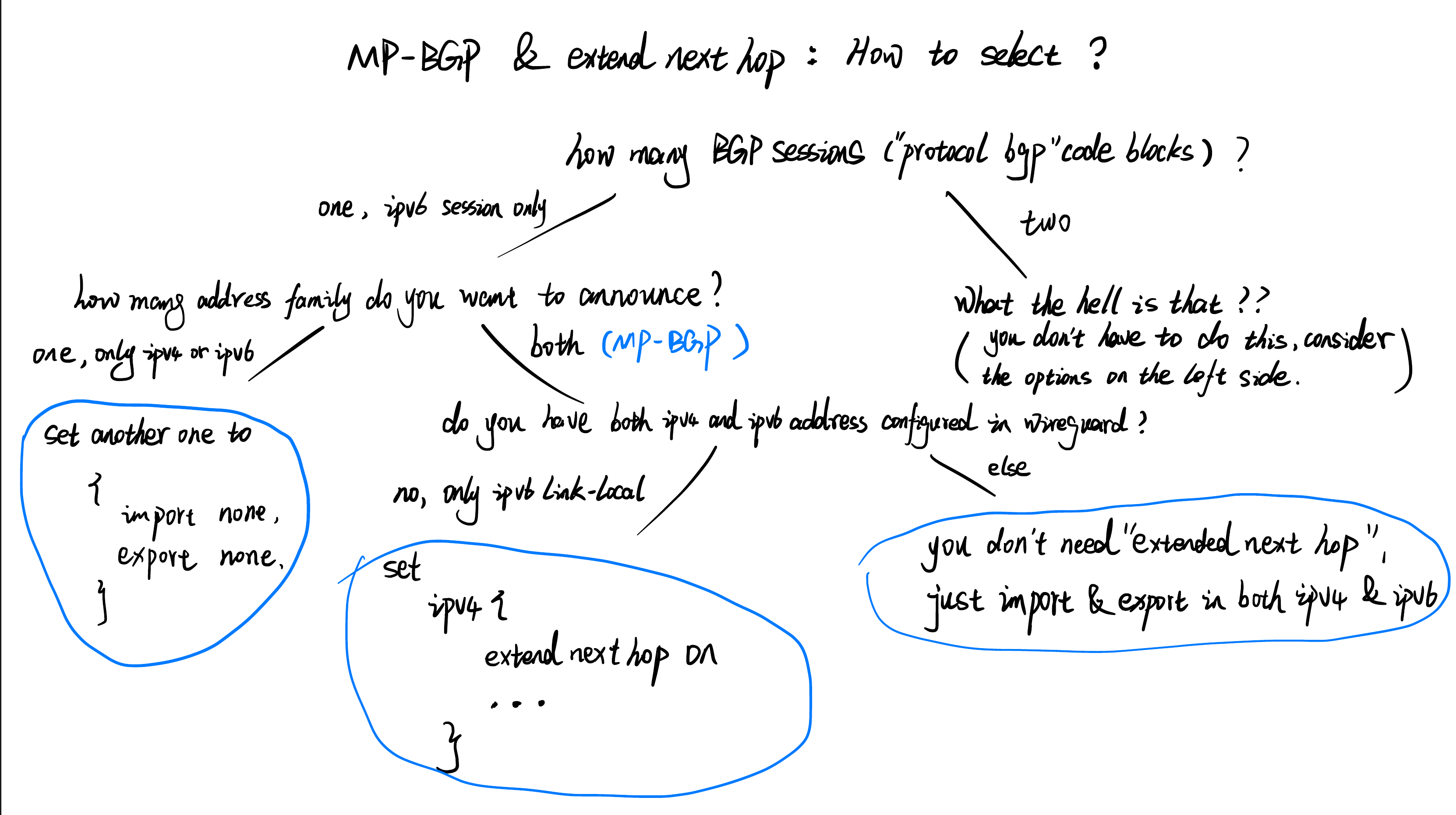This project documents an effort to deploy dn42 Route Server (and some related services) in docker containers. The purpose is to avoid duplicate configurations by describing all service in the docker-compose.yml. You can also call it Infrastructure as Code (IaC). Should be suitable for those who want to get in touch with dn42 quickly and those who want to add Route Server.
| services | components | status |
|---|---|---|
| bgp | bird2 | ✔️ |
| dns | bind9 | ✔️ |
| bird-lgproxy | xddxdd/bird-lgproxy-go | 🚧 |
| bird-lg | xddxdd/bird-lg-go | 🚧 |
We recommend to use docker-compose v2 to setup containers.
- Build all containers and docker networks
docker compose up --build --no-start
- Start all containers
docker compose start
- Show status of containers
docker compose ps
- Enter specific container
docker compose exec bgp bash - Stop and delete all services and docker networks completely
docker compose down
We only list the minimum configuration needed to make it work. For more configurations, please read the code or docker-compose specification
-
Configure the
subnetfordn42-netindocker-compose.ymlnetworks: dn42-net: driver: bridge enable_ipv6: true internal: false ipam: driver: default config: - subnet: <your dn42 ipv4 subnet> - subnet: <your dn42 ipv6 subnet>
This is usually the range of dn42 addresses you get. But if you are expanding your dn42 network, make sure that this subnet does not conflict with the rest of your dn42 subnet.
!!! Note that the docker host will take up the first address on the subnet. So you cannot assign the first ip to any of the containers.
-
For each service, you may want to assign a dn42 ip address fot it.
networks: dn42-net: ipv4_address: "<dn42 ip address allocated this service>" ipv6_address: "<dn42 ip address allocated this service>"
-
And you can config the dns to a server that can provide
.dn42resolution, for example, you can use172.20.0.53dns: - 172.20.0.53 # wildly used dns server in dn42. Or you can change this to your dns service ip address
-
All containers except the bgp container need to manually configure routes to forward traffic going to the dn42 network to the bgp container.
We provide two environment variable to configure the ip address of the dn42 gateway
environment: - DN42_GATEWAY_V4=<ipv4 address of your bgp container> - DN42_GATEWAY_V6=<ipv6 address of your bgp container>
-
Edit
bgp/named.confYou need to edit the config file of bird2
bgp/named.confaccording to the guidance here. -
For each of your peers, create files in dir
bgp/bird2-peersandbgp/wg-peers -
You need to add port mapping for your peers in
docker-compose.ymlports: - "21742:21742/udp" # imlk
This service is both an authoritative name server and a recursive name server.
As an example, I've included my zone configuration(
imlk.dn42.zoneand0%2F26.96.22.172.in-addr.arpa.zoneande.0.a.8.a.a.2.d.2.4.d.f.ip6.arpa.zone), !!! make sure you remove it before you deploy !!!.
-
Edit
bind9/named.confto add your zonesTypically, you will need to add three zones, one for domain name resolution, and two for reverse resolutions (PTR records for ipv4 and ipv6 address).
Also, please put the zone files in the
zonesdirectory. -
Setup dnssec
You need to generate the
zone-signing keyandkey-signing keyfor each zone.As an example, for zone
example.dn42, run following command to generate keys inbind9/dnssec_keysdirectory.cd bind9/dnssec_keys # generate zone-signing key dnssec-keygen -a ECDSAP256SHA256 -n ZONE example.dn42 # generate key-signing key dnssec-keygen -f KSK -a ECDSAP256SHA256 -n ZONE example.dn42
Each run of
dnssec-keygenwill generate a pair of.keyfile and.privatefile. Remember to include the path of generated.keyfile in the corresponding .zone file.You do not need to sign your zone manually. When you build this service, it automatically generates
RRSIGrecords usingdnssec-signzone. It will also print out theDSrecords so you can add them to the dn42/register git repository
-
Should I disable my firewall software on docker host?
Normally it is not needed. But if you use
firewalld, you need to setIPv6_rpfilter=noto make ipv6 forwarding work properly. -
DNS configuration
The dns management in docker is rather confusing. In containers using custom bridge network, an Embedded DNS server will be used, and there is only one
nameserver 127.0.0.11in/etc/resov.conf. If you want to modify the dns server used, just add a dns entry indocker-conpose.yml, and the docker Embedded DNS server will forward dns request to that address. -
Why not using a range mapping instead separate port mapping for each peers?
Maybe you're talking about something like this:
ports: - "20000-29999:20000-29999/udp"
However, large port mapping range will cost lost memory, it soon ate up all the memory in my host. see this page
-
DN42_GATEWAY_V4andDN42_GATEWAY_V6looks like ugly script work, why not usegatewayin IPAM configuration?AFAIK, IPAM
gatewayoptions are ignored by the current version of docker compose. see this issue. It seems to be a bug.On the other hand, the option does something different than what it looks like: It only changes the ip address of the host, while the gateway of the container is still set to host.
This is why we need a script work to set the gateway for each container.
-
What is MP-BGP & extend next hop and when should I use them?
- Multi Protocol BGP(BP-BGP): enable to announce route information for different type of address in parallel.
- extend next hop: enable to use ipv6 address as next hop in ipv4 route table, and vice versa.
